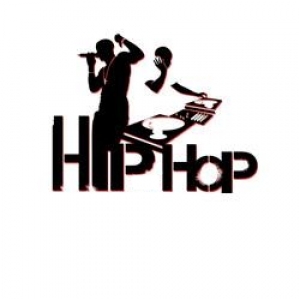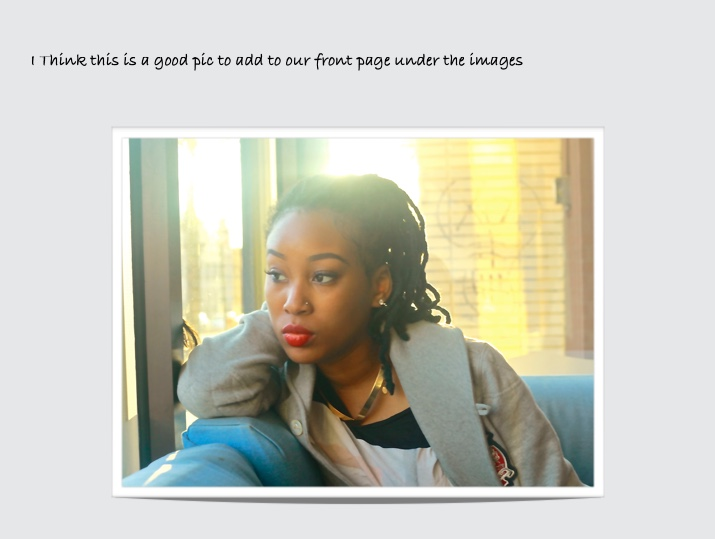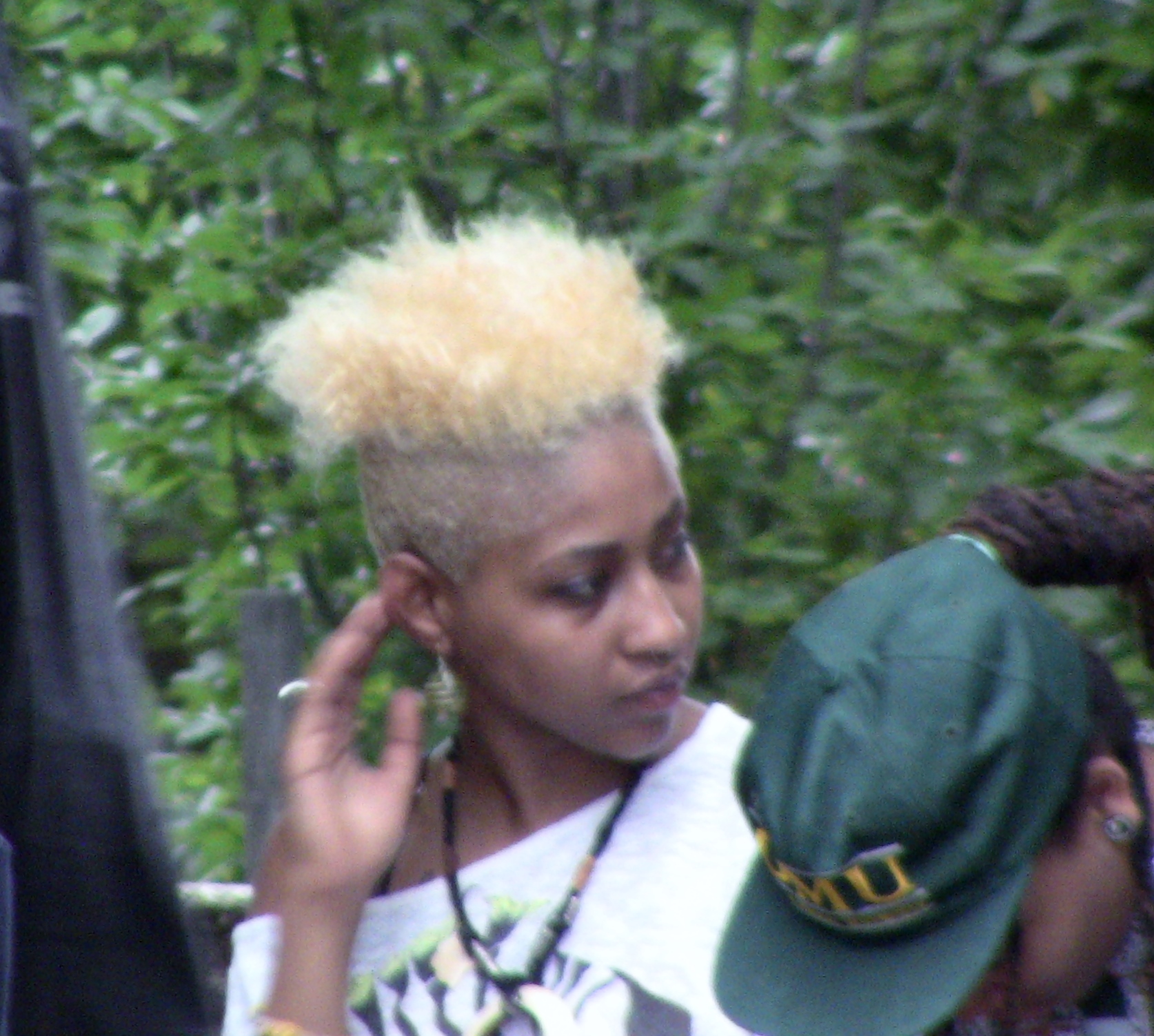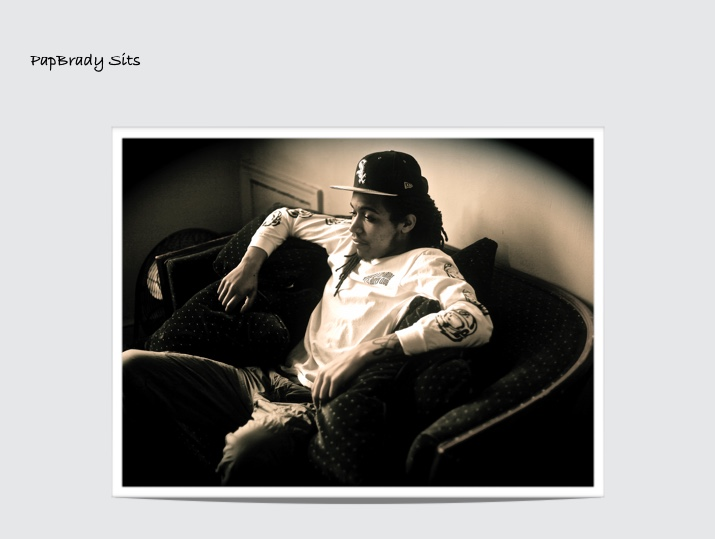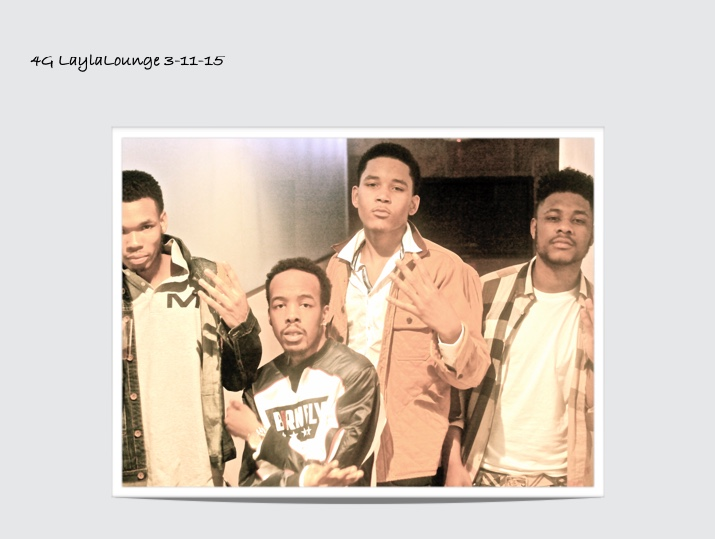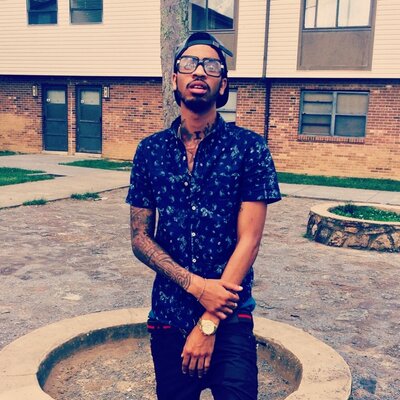Sophisticated Sunday: House Studio Artist Grant to Fund Projects for Six Musicians
- Details
- Parent Category: Onstage
By Natasha T. Brown
“At House Studio, you can just feel this thing that you can’t really put into words, and you feel like wherever music is headed, these cats will be a part of that.”
–Omar Kashif, Alleyhouse Entertainment
 Before an independent artist hits the stage, secures a team, builds a fan base and records a track, one has to figure out how to accomplish this all with a relatively small budget and limited resources. With the emergence of independent studios around the nation, very few offer the quality, reputation, resources, and opportunities for independent artists as those at House Studio DC, located in Northeast, Washington.
Before an independent artist hits the stage, secures a team, builds a fan base and records a track, one has to figure out how to accomplish this all with a relatively small budget and limited resources. With the emergence of independent studios around the nation, very few offer the quality, reputation, resources, and opportunities for independent artists as those at House Studio DC, located in Northeast, Washington.
Its latest opportunity for artists is the House Studio Artist Grant, a program that will offer six talented musicians (from anywhere in the US) an opportunity to take their careers to the next level, with full recording, video, marketing and a production package from House at no charge. This investment from House Studio is a $30,000 value for each artist selected.
“We’re looking for the complete package, someone who is ready to go to the next level with their career, someone who needs a break. Maybe they have talent, strong drive, but maybe they don’t have a serious creative team or the funds to get the project made,” said House Studio CEO Yudu Gray, Jr.
The House Studio Artist Grant Application can be downloaded from www.houseartistgrant.com. The grant process is quite simple, and one that any independent artist who is serious about his/her artistry should take advantage of. The deadline to apply is January 8, 2013, and recipients will be notified in February, with three to six months of production commencing that same month.
Next year will be the first official class of House Artist Grantees, however Gray said that, “This has always been in the DNA of our company. Before now, we kinda looked out for artists, but we were actually doing more damage than good by hooking artists up with free studio time, because that isn’t how the industry is designed.”
For those who receive the grant, there is very little room to take it for granted, because there is an actual program with classes in financial management, time management, publishing and trademarking, in addition to studio time and video shoots.
“The goal,” according to Gray, “is to create a well-packaged artist and not just someone who has good music.”
Artists that House Studio has supported in the past include Soul Singer Reesa Renee, popular band Black Alley, Source-featured hip-hop artist Javier Starks; Spoken Word Artist Drew Law and recent X-Factor Contestant RaTheMC.
“Besides providing a platform for everything that I have going on, the fact that House Studio works with so many musicians and the guidance that they gave me made it easy for me to get into the swing of recording,” said Javier Starks. “The artist program helped me reach further extremes and get better as an artist.”
Omar Kashif, Manager of Black Alley, mirrored those sentiments about the collaboration with House on Black Alley’s Soul Swagger Rock Sneakers album released in March of 2012.
“One of the main things House Studio provided us was a very competent and capable engineer by the name of Jake, and what I like most about the place is the young energy…. The way they mix and their ideas are really wonderful for DC’s music scene,” Kashif said.
Gray would like all artists to apply for the grant, especially those who may want support from House Studio and access to its resources, which include 2 large studios, space for recording live instrumentation, lounge/event space, producers, engineers, a video team, and a comfortable environment with cozy amenities including a kitchen, shower and much more.
“Even if an artist doesn’t get the Artist Grant, but if they at least show that they applied, it lets me know that they are serious. If they don’t try to get it, it makes me question their dedication as an artist,” said Gray. “If you are an artist and you feel like you would like help with your career, I beg you – please apply.”
Natasha Brown is a writer and founding communications strategist of Think Brown INK, a creative think tank and strategic communications agency in the Washington area. Follow her on Twitter @TBINatasha or @ThinkBrownINK
More About The Liberia Project
- Details
- Parent Category: Onstage
 If the history of the Black experience was edible, one of its most delicious entrees would be the creation of the independent nation of Liberia.
If the history of the Black experience was edible, one of its most delicious entrees would be the creation of the independent nation of Liberia.
Of all our celebrations of enterprise and industriousness, few endeavors match the faith and courage required to set sail for the unknown and carve out a new reality holding the promise of freedom from the indignities suffered by people of color in early America.
We know in truth that the effort and its effects, like all colonizing efforts, was flawed and full of unintended consequences. Still, in historical terms, the founding of Liberia ranks second only to the successful uprising in Haiti as a milestone of black achievement in the 1800’s. What’s amazing today, in the age of special curriculums and annual Black History months is that so little recognition of Liberia is given despite the undeniable fact that genealogical ties remain between the descendants of that nation’s founders and blacks throughout America. Today Americo-Liberians as they are referred to, constitute a small minority of their nation; numbering only about 150,000 to 200,000 in a land of 4 million, but they and their extended families are America’s kin in every sense of the word.
In the same way that globalization has made African American culture a worldwide phenomenon; Americo-Liberians carved a unique American imprint on Liberia that lingers to this day. Liberia, whose name means “land of the free,” remains the most American of African countries. The Liberian flag, government, and constitution resemble those of the United States. The former residences of Americo-Liberian families (which still stand) resemble those of former majestic plantation homes in the old American South. Many native Liberians still talk with hints of African American vernacular English. Liberian immigrants to the U.S. have the highest passport acceptance rates and the longest extension rates of any African nation and easily integrate into African American communities. Because of these familial ties all Liberians, despite their heritage or tribal affiliations, have always looked westward for inspiration.
After years of a destructive civil war, Liberia is growing again. The government of Ellen Johnson-Sirleaf, the African continent’s first elected female president, has identified and emphasizes tourism as an important factor in revitalizing the economy. As long ago as 2007 BET founder Robert Johnson called for, “African Americans to support Liberia like Jewish Americans support Israel.” He helped in the creation of a $30 million Liberia Enterprise Development Fund and has shown his commitment to revitalizing the historic relationship between Liberia and America by constructing a beautiful seaside hotel, the RLJ Kendeja Resort & Villas, in Monrovia.
This is the same spirit we hope to capture with The Liberia Project. For us, it’s mostly about music but music has always been a bridge that anyone can cross. We’re hoping that if we’re fortunate enough to take off with a plane full of Hip Hop artists and musicians and music producers, and filmmakers and project supporters that our city will be flying with us. There’s still a long way to go to make the dream a reality, but with your support this beautiful story is going to end up as a documentary no one is satisfied to wait until Black History month to see. #OnStage
Make a Commercial for OnStage
- Details
- Parent Category: Onstage
 Want to win some money and a lot of exposure? Want to help push the hottest brand in DC while you’re at it? Okay. We’ve got a deal for you….
Want to win some money and a lot of exposure? Want to help push the hottest brand in DC while you’re at it? Okay. We’ve got a deal for you….
One of the most unique trends in advertising is crowdsourced commercials. That’s when brands invite their followers, instead of an ad agency, to create a commercial that will really engage viewers. Everybody’s doing it, from Pepsi, to Dell, to Chevrolet for their Super Bowl ads. So we thought... if the mega-brands are doing it, why not do it at OnStage? After all, our site visitors are all card carrying members of Creative Nation. We’ve got the hottest artists, the hottest promoters, the best videographers, writers, stylists, fashionistas out the door, and just regular old cool folk checking in on the daily. Statistics don’t lie, and Klout can verify that everybody who regularly checks out our website is a certified tastemaker!
So, if you’re already qualified, why not do it? Shoot a 30 to 60 second commercial promoting OnStage as the number one online destination for music lovers. Be as creative, colorful, quirky, and soulful as you like. Get your folks to star in it, or shoot it solo in front of your webcam, do it in animation, or a combination of visuals and text. Then enter our new contest, upload your work, and ask your family, friends and associates to check it out and vote for it. Top vote getter wins the prize (and the fame!) Check back in a couple days for contest start date and details. Or just hit us up below with any questions or comments.
10 Questions 4 Marcus J Moore
- Details
- Parent Category: Onstage
 What’s the Marcus J Moore story? When did you begin writing and why did you choose music criticism?
What’s the Marcus J Moore story? When did you begin writing and why did you choose music criticism?
I’ve been a writer since kindergarten. As a five-year-old, I’d scribble random musings on the walls at home (my mom didn’t like that too much). By fourth-grade, I wrote rhymes and short stories; some of them were surprisingly good (at least I thought so!) By the time I got to Suitland High School, I knew I wanted to write professionally, but didn’t know in what capacity. Enter Carol Kilby, my 11th-grade English teacher. She made me Editor-in-chief of my senior class yearbook, which included page layouts, ordering additional space, etc. She also enrolled my friend Brooke Garner and I in the NABJ Urban Journalism Workshop at Howard University. That’s when I knew I wanted to write for newspapers.
After a brief stint with The Prince George’s Sentinel, I began working for The Gazette newspapers in Prince George’s and Montgomery counties. During my six-year tenure with the paper, I covered crime, politics, development, business, and education. By 2010, though, I had grown tired of covering schools and the daily newspaper grind in general. I felt like I wrote the same stories every week: in-fighting between the Montgomery County School Board and County Council, budget cuts, curriculum changes, etc.
I’ve always wanted to be a music journalist, but always thought I needed a job with Rolling Stone or something. In 2009, I attended this album release party in Virginia, where I reunited with my high school friend Teisha Marie. She told me, “You know, I have this album out, but no one to review it.” I bought it to support, played it on the way home and was impressed with what I heard. I had written a column about Okayplayer for The Root and still had the OKP contacts. I pitched Teisha’s album for review, wrote it up, and submitted. They liked what they read so much that they asked me to join the team. OKP and Sound-Savvy were the first publications to give me a shot. I’m very thankful for that.
You write for several publications. What are they?
I write for MTV Hive, the British Broadcasting Corporation (BBC), Washington City Paper, and Drowned in Sound (a wildly popular music site based in London; pretty much the UK version of Pitchfork). I also write occasionally for Beats Per Minute and Okayplayer. I’ve also written for Paste and Prefix magazines, AOL Spinner, and Potholes In My Blog. In 2008, I conducted a live chat on The Washington Post’s website about Okayplayer’s relevance in the current Internet landscape.
You also do the annual WKYS Top Ten List. You’re generally the one making the most succinct observations. Have you agreed with all the results?
Not at all. For the life of me, I’m still trying to figure out how Oddisee tied for 10th on last year’s list. That doesn’t make any sense whatsoever. Here, we have a musician who tours the world with his art, and can make music for any type of listener, and he’s the 10th-best rapper in D.C.? That’s insane. The list, as well intentioned as it is, is merely a popularity contest in which the rappers encourage their fans to vote for them. My problem also stems from the word “hot.” Why are we compiling lists with the city’s “hottest” rappers on them? My job as a “gatekeeper” is to tell the world about the city’s best MCs, not the “hot” ones. Flames burn out; greatness lasts much longer. In turn, the rappers with sustainable talent will represent our city much longer than the “hot” ones. “Hot” rappers tend to get stale much quicker.
Your MTV Hive article, The Five Best Underground Rappers in Washington, DC Right Now, stirred it up a little bit. What kind of responses did you get?
The only shade I got was from a local reader who always complains when I don’t mention the rappers with whom she’s affiliated. That’s cool, though, because I expected it. Other than that, the reaction was mostly positive — at least publicly [Laughs]. Surely, there were folks wondering why certain rappers didn’t make the cut, but even their arguments were clear-headed and thoughtful. There weren’t any heated exchanges or anything like that. As a writer, there’s always someone who disagrees with your work, and that’s okay. Writing is such an isolated art that you’re happy when anyone takes an interest in your words. In hindsight, I’ve found that the article — coupled with the other work I do — has transitioned me from “Marcus Moore, local writer” to “Marcus Moore, important guy.” I’m truly honored, though I’m still getting used to it [Laughs].
If we threw some other names in the mix; Shy Glizzy, Young Sir, G’Town Wayne, Young Moe, and Black Cobain… which of them, on skill alone, has the best chance of cracking the list?
I’d have to say Black Cobain. Not only does he have the Wale connection, he’s the best lyricist out of the bunch. I’m a “lyrics” guy, and have been called a “backpack writer,” whatever that means. Still, there’s no denying that the guy can rhyme, even if he sounds too much like Wale for my taste. I applaud his talent and the moves he’s making, though.
It seems to us that Hip Hop is still trying to find its own voice in DC, that artists haven’t experienced that national breakout because too much of what they are doing lacks uniqueness. Is that a fair assessment?
That’s a very fair assessment. Too many young rappers want to emulate the people who’ve already got on; they dress and rap like Wale, and wonder why no one takes them seriously. We need more young rappers to provide the alternative, to create art that’s dynamic and different, not just the same cookie-cutter nonsense that’s so popular now. The rap game is a rat race, so when they see someone earning money rhyming a certain way, they feel the need to reinvent the wheel instead of making music with staying power. We need artists to provide the alternative, and stop trying to fit in with the crowd. If everyone else is creating what you’re creating, why should anyone pay attention to you? What makes you stand out? Now that Fat Trel is beginning to make national strides, the field is wide open for someone to take the crown. I just hope the next rapper does something unique. They can’t always pop bottles and sell drugs. D.C. is the political capital of the world, and we have an election in our backyard — arguably the most important one ever — that could change the face of the nation. Gentrification is changing the outlook of D.C., and there’s an inexplicable tension that permeates formerly black areas of the city. So there’s certainly a lot to discuss. We need a social commentator now more than ever.
What advice would you give, or have you given, to young artists trying to get to that next level?
Be humble and work hard. All too often these days, younger rappers want instant gratification — like, they’ve been rapping for 10 minutes and don’t understand why they aren’t “on” yet. It takes years to get noticed, even if you’re really good. Create art that has a lasting impact on listeners, and don’t try to create music for the radio. It’s no secret that WKYS and WPGC won’t play a lot of local rap; however, Ill Street Grooves does (as long as the music is good).
We’re living in beautiful times: you don’t really need the radio to be successful. Push it to prominent local blogs, local writers and journalists, and push it to your dedicated audience. In turn, they’ll push it elsewhere and create a ground swell through which you can build a long-standing fan base. Again, too many young rappers are focused on being “hot,” and craft microwave music that won’t last long beyond initial consumption. Music, more than other art forms, has this unique way of always finding the right ears. Listeners aren’t dumb and they can tell when something is genuine or not. If your music is heartfelt and there’s an honest passion behind it, you will be successful. Surely there will be some impatient moments, and you’ll think about quitting several times, but you’ve gotta put that energy into the music and create something from the soul. Rap music desperately needs some authentic soul.
What are two or three of the best mixtapes you’ve heard this year from DC Hip Hop artists?
I really like X.O.’s new mixtape, The Color Grey. It’s a 12-song set of focused real talk, something that young and old listeners can digest. I’ve always liked X.O.’s music, but I felt sometimes that he rapped just for the sake of rapping. He went in on this one, though: He’s criticizing the media, chastising the government, and voicing the despair in his community. Also, the beats mesh well with X.O.’s flow. I also liked Beef & Broccoli, the mixtape from Silver Spring MC Awthentik and Violet Says 5 front man Ethan Spalding. I admire the laid-back vibe on this one: the rappers have a natural bond and they’re simply having fun here. It’s like Southern crunk with an East Coast edge, it’s very lyrical, though they don’t beat you up with metaphors and syllables.
What’s your favorite DC venue for live music experiences, both acoustically and ambience?
Acoustically, the sound system at U Street Music Hall is stellar. That’s a great place to go for a bombastic live experience. I like the Fillmore because of its space; you never feel too close to the next person, and the hall is big enough to pack in a lot of people. The Howard Theater is just swanky; the interior is awesome and the sound system is impressive. I go to Bohemian Caverns when I feel like laying low. With all the music I cover — locally, nationally and internationally — I go there to chill in the cave and catch some great jazz.
What’s up next for Marcus J Moore? Television? A book? You’ve already put your stamp on DC music criticism. Where would you like your career to go from here?
A book is definitely on the front burner, though I haven’t quite narrowed the premise. I’ve been kicking around some ideas for it, just need to write an outline and plan the book’s direction. I’d also like to teach at the high school or university level, maybe a digital writing workshop or a hip-hop politics course. I know for sure that I’d definitely love to teach. From here, I’d like to cover music for The New York Times or Rolling Stone, if they’d have me [laughs], though I’m truly blessed to be where I am. I’ve seen a lot of great shows and forged relationships with some great people, based solely on my ability to write. In the meantime, I’m trying to get better with each article. I want to be one of the all-time greats. A lofty goal, I know.tabi Bonney #Jetsetter
- Details
- Parent Category: Onstage
 With his flair for showmanship and an impressive body of work already in his catalog, Togo born and DC bred rapper tabi Bonney is approaching legendary status in DC hip hop circles. That he’s not been given full credit in his hometown before now for how talented he actually is has more to do with his absence than with his ability. The “Jetsetter” probably has more frequent flyer miles than any other DC artist in his genre. He recounted his recent travel stops during his performance at the H Street Festival last Saturday, September 15th. If you haven’t checked out (and bought) his critically acclaimed “LoveJoy Park”, it’s available on his Bandcamp page. For the latest news on his travels, follow him on Twitter @tabiBonney.
With his flair for showmanship and an impressive body of work already in his catalog, Togo born and DC bred rapper tabi Bonney is approaching legendary status in DC hip hop circles. That he’s not been given full credit in his hometown before now for how talented he actually is has more to do with his absence than with his ability. The “Jetsetter” probably has more frequent flyer miles than any other DC artist in his genre. He recounted his recent travel stops during his performance at the H Street Festival last Saturday, September 15th. If you haven’t checked out (and bought) his critically acclaimed “LoveJoy Park”, it’s available on his Bandcamp page. For the latest news on his travels, follow him on Twitter @tabiBonney.



